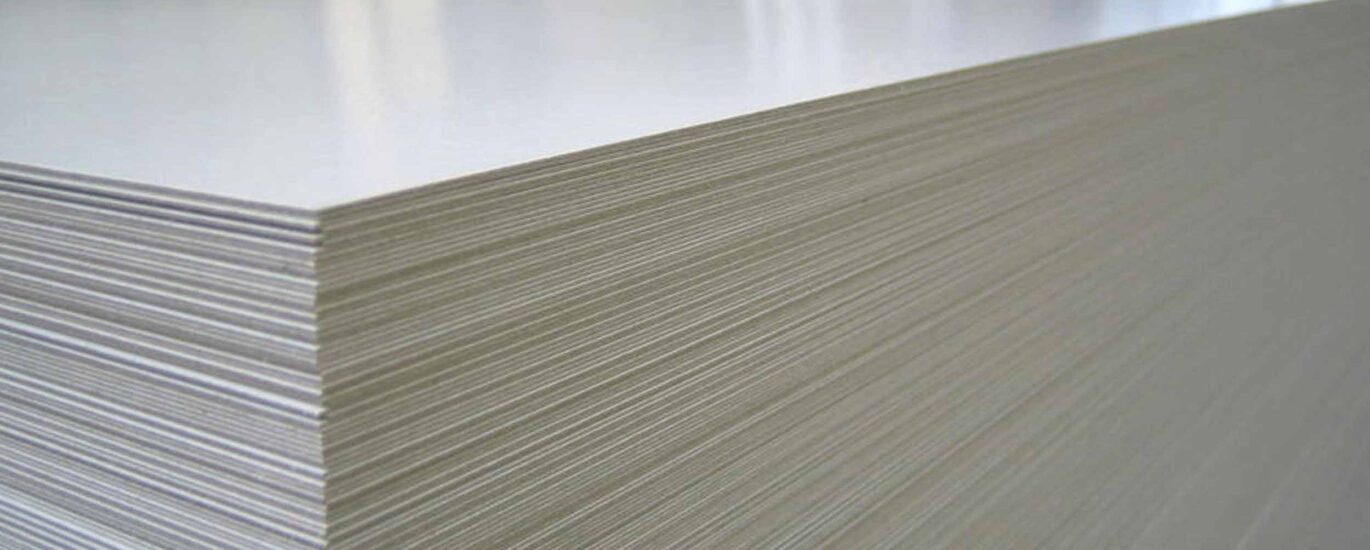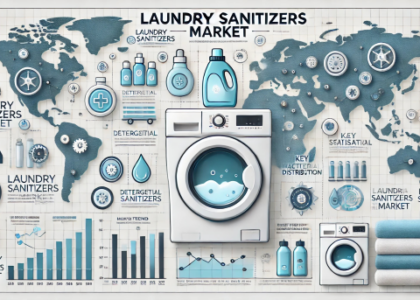The solid board market is experiencing steady growth, driven by its versatile applications and eco-friendly characteristics. Solid board, also known as chipboard or paperboard, is a durable and recyclable material widely used in packaging, graphic arts, and various industries. Its excellent printability, foldability, and strength make it ideal for manufacturing boxes, cartons, and displays.
The rising demand for sustainable packaging solutions and increased awareness about environmental concerns contribute to the market’s expansion. Additionally, solid board’s cost-effectiveness and ease of customization further fuel its adoption across different sectors, making it a preferred choice for packaging and promotional materials.
The market for solid board is anticipated to reach US$ 13.2 Billion by 2029, at a CAGR of 4.3% from US$ 9.8 Billion in 2022. According to FMI, the worldwide solid board market would be worth US$9.4 Bn in 2021. By the end of 2029, it is most likely to be worth 1.3 times the current market value. The solid board market grew historically at a CAGR of 3.7%, and from 2022 to 2029, it is anticipated to grow at a CAGR of 4.3%. By 2029, it’s anticipated to generate an additional US$3.8 billion in opportunities.
Experience the Insights Firsthand: Request a Sample Report: https://www.futuremarketinsights.com/reports/sample/rep-gb-7069
The solid board market has witnessed remarkable growth in recent years, driven by several key factors. Here are five essential points that highlight the significance of this industry:
- Rising Demand: The solid board market is experiencing increased demand across various sectors, including packaging, construction, and furniture. Its versatility and durability make it a preferred choice for applications requiring sturdy and reliable materials.
- Sustainable Solution: Solid board is an eco-friendly alternative to traditional packaging materials like plastic and corrugated board. It is recyclable, biodegradable, and sourced from renewable materials, aligning with the growing global focus on sustainability.
- Packaging Advantages: Solid board offers excellent protection and stacking strength, making it ideal for packaging fragile and heavy items. Its rigidity ensures enhanced product safety during transportation, reducing the risk of damage.
- Customization Opportunities: Manufacturers can easily tailor solid board products to meet specific customer requirements. With options for different thicknesses, sizes, and printing capabilities, it enables branding opportunities and enhances the overall aesthetic appeal of packaged goods.
- Market Expansion: The solid board market is expected to witness further growth due to increasing e-commerce activities, urbanization, and industrial development. As companies seek reliable and cost-effective packaging solutions, the demand for solid board is predicted to rise in the coming years.
The market for the solid board is anticipated to reach US$ 13.2 Billion by 2029, at a CAGR of 4.3% from US$ 9.8 Billion in 2022. According to FMI, the worldwide solid board market would be worth US$9.4 Bn in 2021. By the end of 2029, it is most likely to be worth 1.3 times the current market value.
The solid board market grew historically at a CAGR of 3.7%, and from 2022 to 2029, it is anticipated to grow at a CAGR of 4.3%. By 2029, it’s anticipated to generate an additional US$3.8 billion in opportunities.
Solid board, also known as solid fiberboard, is a type of paperboard made from recycled paper pulp. It is a dense and strong material that is commonly used in packaging applications, such as for food, electronics, and industrial goods.
One of the key trends driving the growth of the solid board market is the increasing demand for sustainable packaging solutions. Solid board is a more environmentally friendly alternative to plastic and other synthetic packaging materials, as it is biodegradable and can be recycled. Additionally, many companies are now looking for ways to reduce their carbon footprint and improve their sustainability, which is driving demand for solid board.
Another key trend driving the growth of the solid board market is the growing use of the material in the food industry. Solid board is commonly used in packaging for food products, as it provides an effective barrier against moisture, light, and oxygen, which helps to preserve the freshness and quality of the food.
The market for solid board is segmented by application into food, electronics, and industrial goods. The food segment is expected to hold the largest share of the market during the forecast period, due to the increasing demand for packaged food products and the excellent barrier properties of solid board. The electronics segment is also expected to grow at a significant CAGR during the forecast period, driven by the growing use of solid board in packaging for electronic products.
The market for solid board is also segmented by product type into single-layer and multi-layer. The single-layer segment is expected to hold the largest share of the market during the forecast period, due to its lower cost and ease of use. The multi-layer segment is also expected to grow at a significant CAGR during the forecast period, driven by the improved barrier properties and strength of the multi-layer board.
The market for solid board is further segmented by region into North America, Europe, Asia Pacific, and Rest of the World. The Asia Pacific region is expected to hold the largest share of the market during the forecast period, due to the increasing demand for packaged food products in countries such as China and India. North America and Europe are also expected to witness significant growth during the forecast period, driven by the growing use of solid board in the electronics and industrial sectors.
Overall, the global solid board market is expected to grow at a steady pace during the forecast period, driven by increasing demand for sustainable packaging solutions and the growing use of the material in the food and electronics industries. Companies operating in the market are expected to focus on developing new and innovative products to meet the changing demands of consumers and stay ahead of the competition.
Solid boards are in higher demand due to their increased use in packaging and promotional products like as boxes, layer pads, and point-of-purchase displays. Solid boards are commonly used to make boxes because they have a flat and compact structure and are easier to print. Solid boards are also manufactured from recycled paper and are 100% recyclable.
Key drivers driving the growth of the solid board market are point-of-sale appeal and cost-effective packaging solutions, coupled with sustainability offered by solid boards over alternatives such as plastic or metal products. Moreover, rising consumer preference for eco-friendly products has boosted the demand for solid boards for manufacturing packaging & promotional products on a global scale.
On the back of these factors, the solid board market is projected to register a CAGR of 4.3% during the forecast period, and reach a valuation of US$ 13.2 Bn by 2029.
“Solid boards are ideal for manufacturing packaging solutions that can be used in humid conditions, and for packaging frozen food, fresh food, and flowers. The use of solid boards offers an attractive competitive advantage over other forms of packaging and promotional products, as these can improve distribution speed, reduce storage cost, and boost packaging efficiency.”
Key Insights of Solid Board Market Study
- Solid board made from virgin paper holds more than half of the total market share among all segments by material type in the global solid board market, as this type can be easily be cut and is suitable for printing. This segment is estimated to expand 1.2X its current value by 2023.
- As per FMI analysis, the boxes segment is identified as the most preferred application of solid boards for packaging, as consumers are concerned about the environmental impact of packaging waste.
- The food & beverage industry is projected to remain the key consumer for players in the solid board market during the forecast period, and is expected to grow by 1.5X its current value by 2029. Increased consumption of food & beverages such as fresh produce and frozen food in developed countries is anticipated to accelerate the demand for solid boards during the forecast period.
Solid Board Market: Competition Landscape
Smurfit Kappa Group, International Paper, VPK Packaging Group NV, Metsä Board, and Sappi Limited are tier-1 market players operating in the global solid board market. Holmen Group, Billerudkorsnas AB, Mugler Masterpack Crimmitschau GmbH, WestRock Company, and Stora Enso have been identified as tier-2 market players in the global market. However, several unorganized and regional manufacturers may enter the solid board market through mergers or collaborations to compete with global players.
About Solid Board Market Report
Future Market Insights, in its new report, offers an unbiased analysis of the global solid board market, analyzing historical demand from 2014-2021 and forecast statistics for 2022-2029. The study reveals growth projections of the solid board market on the basis of material type (recycled paper and virgin paper), weight (up to 200 GSM, 201-300 GSM, 301-500 GSM, and above 500 GSM), application (boxes, pop displays, edge protectors, trays, and layer pads), and end-use industry (food & beverages, electrical & electronics, healthcare & pharmaceuticals, cosmetics & personal care, building & construction, tobacco packaging, and other industrial packaging), across seven regions.
Request Report Methodology: https://www.futuremarketinsights.com/request-report-methodology/rep-gb-7069
Solid Board Market By Category
By Material Type:
- Recycled Paper
- Virgin Paper
By Weight:
- Upto 200 GSM
- 201-300 GSM
- 301-500 GSM
- Above 500 GSM
By Application:
- Boxes
- POP Display
- Edge Protectors
- Trays
- Layer Pads
By End Use Industry:
- Electrical & Electronics
- Health care & Pharmaceuticals
- Cosmetics & Personal care
- Food & Beverages
- Confectionery
- Fresh Produce
- Milk & Dairy
- Frozen Food
- Meat & Poultry
- Other Industrial Packaging
- Building & Construction
- Tobacco Packaging
Author:
Ismail Sutaria (Lead Consultant, Packaging and Materials) has over 8 years of experience in market research and consulting in the packaging & materials industry. Ismail’s strength lies in identifying key challenges faced by the client and offering logical and actionable insights to equip the clients with strategic decision-making power.
Ismail has been an instrumental part of several transformational consulting assignments. His key skills include competitive benchmarking, opportunity assessment, macroeconomic analysis, and business transformation advisory. Ismail is an MBA holder in Marketing and has a Bachelor’s Degree in Mathematics.
Ismail is a regular at industry conferences and expos and has been widely covered in electronic and print media. He is a Speaker at our upcoming Talk show – Rise of the Intelligent Packaging. Ismail has been quoted in leading publications, including the European Pharmaceutical Review and the European Adhesive Tape Association.
About Future Market Insights (FMI)
Future Market Insights, Inc. (ESOMAR certified, recipient of the Stevie Award, and a member of the Greater New York Chamber of Commerce) offers profound insights into the driving factors that are boosting demand in the market. FMI stands as the leading global provider of market intelligence, advisory services, consulting, and events for the Packaging, Food and Beverage, Consumer Technology, Healthcare, Industrial, and Chemicals markets. With a vast team of over 5000 analysts worldwide, FMI provides global, regional, and local expertise on diverse domains and industry trends across more than 110 countries.
Contact Us:
Future Market Insights Inc.
Christiana Corporate, 200 Continental Drive,
Suite 401, Newark, Delaware – 19713, USA
T: +1-845-579-5705
For Sales Enquiries: sales@futuremarketinsights.com
Website: https://www.futuremarketinsights.com
LinkedIn| Twitter| Blogs | YouTube




